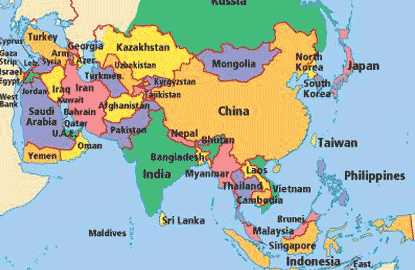
MANILA/JAKARTA (April 29): Central banks in Asia's emerging markets are introducing new policy tools to get lenders to cut borrowing costs and move credit more quickly through their slowing economies.
Analysts say the recent moves by countries like India, Indonesia and the Philippines will help short-term market rates more closely reflect changes in benchmark policy rates, although desired results may not come as fast as some would like.
"The changes in the Philippines, Indonesia and India are all aimed in the same direction: making monetary transmission stronger," said Vaninder Singh, Asia economist at RBS in Singapore.
"This, in my view, is a good development as it helps improve the monetary infrastructure within Asia."
Importantly, these steps also help reduce the need for central banks to deploy unconventional and controversial policies, such as quantitative easing or negative rates.
In India and Indonesia, key emerging economies in the region, authorities have recently announced steps to unclog the credit channels as external demand wilts and deflationary pressures slash factory output and overall growth.
Analysts say there are a host of issues undermining policy transmission in much of Asia, including red-tape, regulatory hurdles and the captive funding sources for businesses.
An International Monetary Fund working paper in 2015 also highlighted a high dependence on bank loans as a the primary source of financing for Asia's corporates as a cause of constrained bank credit channels.
Growth in Indonesia, Southeast Asia's biggest economy, slowed to a six-year low last year, heaping pressure on the central bank to get traction on its monetary policy.
Bank Indonesia (BI) has cut its rates three times this year but remains frustrated lenders have not lowered loan rates.
This month, BI announced a move to use the seven-day reverse repurchase rate as its new policy benchmark — instead of the 12 month rate — to better align lending rates with rates in the more liquid money market.
In India, central bank Governor Raghuram Rajan this month announced steps to prod banks to pass on the full benefits of monetary stimulus to the wider economy by cutting the reserves banks are required to hold with the central bank and injecting liquidity.
The Philippines will also start using an interest rate corridor from this quarter to guide market interest rates towards its main policy rate.
In first gear
The proposed fixes, however, may take some time to produce an impact, analysts say, as lenders will need to have confidence in both liquidity conditions and the trajectory of market rates whenever central banks move the policy lever.
In India, for instance, rising bad loans in the past four years have put pressure on bank balance sheets, in turn making lenders reluctant to pass on Reserve Bank of India's rate cuts.
The Indian central bank has cut interest rates by 150 basis points since the start of 2015 to a more than five-year low, but is under pressure to ease further.
Still, no amount of easing will help unless the credit channels start to turn and impact underlying demand.
Euben Paracuelles, senior economist of Southeast Asia at Nomura, said one of the issues in Indonesia is the banking and capital markets regulator's current caps on deposit rates.
"They will have to work with the BI to make sure the new benchmark starts to reflect market rates," he said.
"We are seeing encouraging efforts to make this work, but you probably won't see immediate results," he said.